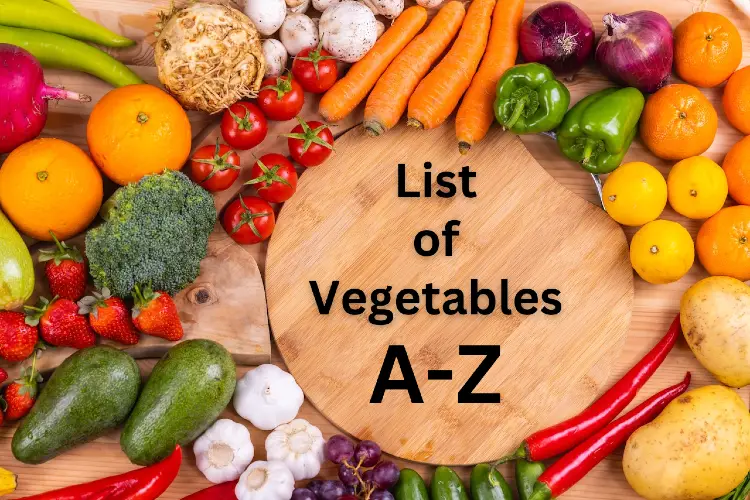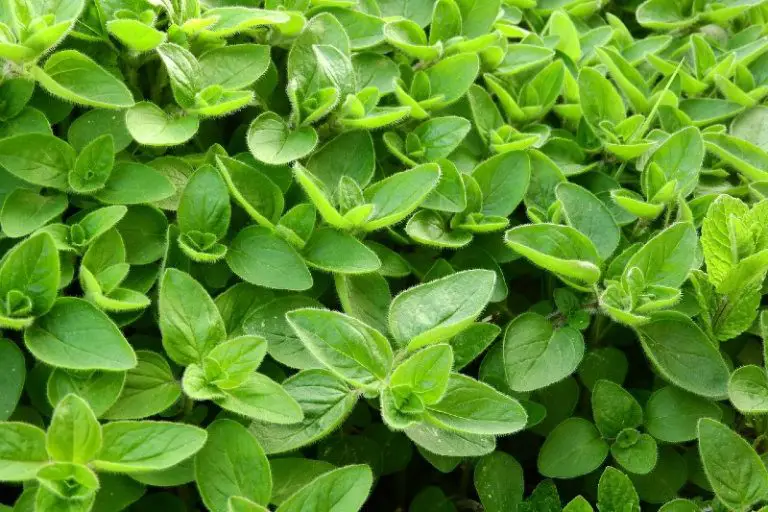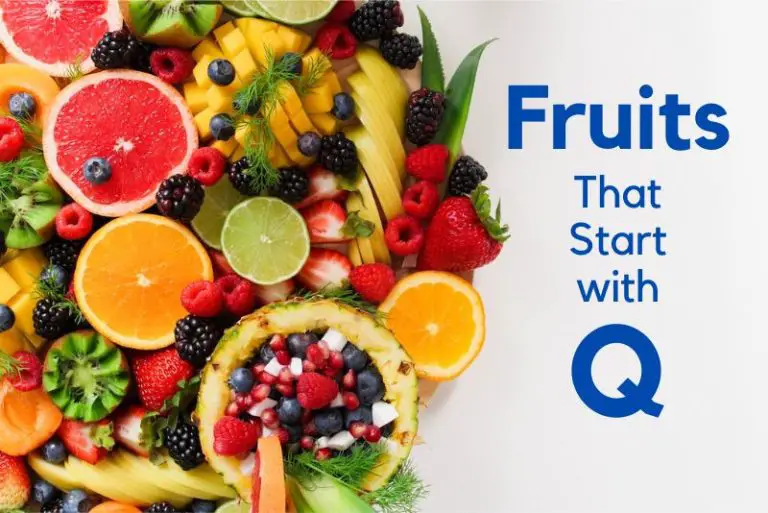Exploring the World of Vegetables: A Comprehensive List from A to Z
Vegetables are a fundamental part of a balanced diet, offering a wide array of essential nutrients that contribute to overall health and well-being. These natural wonders are packed with vitamins, minerals, fiber, and antioxidants that support various bodily functions.
From promoting better digestion to reducing the risk of chronic diseases, the benefits of incorporating a diverse range of vegetables into our daily meals cannot be overstated.
In this article, we embark on an exciting journey through the alphabet, presenting an A-Z list of nutritious vegetables that will not only tantalize your taste buds but also boost your nutritional intake.
The Significance of Vegetables in a Balanced Diet
Vegetables play a crucial role in maintaining a balanced diet as they provide essential nutrients that are often lacking in other food groups. They are low in calories and fat, making them ideal for those seeking to manage their weight while nourishing their bodies.
Additionally, vegetables are rich in vitamins such as vitamin A, C, K, and various B vitamins, all of which support the proper functioning of the immune system, vision, blood clotting, and energy production.
Benefits of Consuming a Diverse Range of Vegetables
One of the key advantages of consuming a diverse range of vegetables is the wide variety of nutrients they offer.
Different vegetables contain different nutrients, and by incorporating various types into our diet, we ensure that our bodies receive a comprehensive nutritional profile.
For instance, leafy greens like spinach and kale are excellent sources of iron and calcium, while colorful bell peppers are abundant in vitamin C and antioxidants.
Moreover, vegetables are a rich source of dietary fiber, which aids in digestion and helps prevent constipation.
Fiber also plays a role in regulating blood sugar levels, making it beneficial for individuals with diabetes or those aiming to manage their blood glucose levels.
Beyond the nutritional benefits, vegetables also add vibrant colors, textures, and flavors to meals, making them visually appealing and delicious.
Experimenting with different vegetables in the kitchen can lead to exciting culinary discoveries and a greater appreciation for plant-based cuisine.
List of Common Vegetables
The primary purpose of this article is to introduce readers to a diverse selection of vegetables, each offering unique health benefits. By presenting an A-Z list of common vegetables, we aim to showcase the vast array of vegetables available, ranging from the well-known favorites to lesser-known varieties that deserve more attention.
From the common carrots and broccoli to the exotic jicama and urad dal, this list will enlighten readers about the rich world of vegetables that awaits exploration.
A
- Asparagus
- Artichoke
- Avocado
- Arugula
- Aubergine (Eggplant)
- Alfalfa Sprouts
Check out full list of vegetables that start with A.
B
- Broccoli
- Brussels Sprouts
- Bell Pepper
- Beetroot
- Bok Choy
- Butternut Squash
Check out full list of vegetables that start with B.
C
- Carrot
- Cauliflower
- Cabbage
- Celery
- Cucumber
- Corn
- Chard (Swiss Chard)
Check out full list of vegetables that start with C.
D
- Daikon Radish
- Dill
- Dragon Fruit
- Diakon Sprouts
- Dandelion Greens
Check out full list of vegetables that start with D.
E
- Eggplant (Aubergine)
- Endive
- Escarole
- Edamame (Young Soybeans)
- Elephant Garlic
- Enoki Mushrooms
Check out full list of vegetables that start with E.
F
- Fennel
- Fiddlehead Ferns
- Fava Beans (Broad Beans)
- French Beans (Green Beans)
- Frisee (Curly Endive)
- Fresno Pepper
- Florence Fennel (Finocchio)
Check out full list of vegetables that start with F.
G
- Green Beans
- Garlic
- Ginger
- Green Pepper (Bell Pepper)
- Green Onion (Scallion)
- Globe Artichoke
Check out full list of vegetables that start with G.
H
- Horseradish
- Hubbard Squash
- Haricot Verts (French Green Beans)
- Hakurei Turnip
- Hearts of Palm
- Hungarian Wax Pepper
Check out full list of vegetables that start with H.
I
- Iceberg Lettuce
- Italian Parsley (Flat-leaf Parsley)
- Icicle Radish
- Ivy Gourd (Tindora)
- Indian Eggplant (Brinjal)
- Ice Plant (Hottentot Fig)
Check out full list of vegetables that start with I.
J
- Jicama
- Jerusalem Artichoke (Sunchokes)
- Jalapeño Pepper
- Japanese Eggplant
- Jackfruit
Check out full list of vegetables that start with J.
K
- Kale
- Kohlrabi
- Kidney Beans
- Kelp
- Kabocha Squash
Check out full list of vegetables that start with K.
L
- Lettuce (Various varieties like Romaine, Butterhead, etc.)
- Leek
- Lima Beans
- Long Beans (Snake Beans/Yardlong Beans)
- Lentils
- Long Green Chili Pepper
Check out full list of vegetables that start with L.
M
- Mushroom (technically a fungus, but often considered a vegetable in cooking)
- Mung Beans (Green Gram)
- Mustard Greens
- Mizuna
- Malabar Spinach
- Mangetout (Snow Peas)
- Marrow (Vegetable Marrow)
Check out full list of vegetables that start with M.
N
- Napa Cabbage
- Navy Beans
- New Zealand Spinach
- Nettles
- Nopal (Prickly Pear Cactus)
- Nasturtium (Edible Flowers and Leaves)
Check out full list of vegetables that start with N.
O
- Onion
- Okra
- Olives (technically a fruit, but often used as a vegetable)
- Oyster Mushrooms
- Orach (Mountain Spinach)
- Ong Choy (Water Spinach)
Check out full list of vegetables that start with O.
P
- Potato
- Pumpkin
- Peas
- Peppers (Bell Peppers, Jalapeño, etc.)
- Parsnip
- Portobello Mushroom
- Purslane
- Plantain (often considered a vegetable when cooked)
Check out full list of vegetables that start with P.
Q
As of now, there are no widely recognized vegetables that start with the letter “Q” in common usage.
R
- Radish
- Rutabaga
- Rhubarb (technically a vegetable, but often used as a fruit)
- Romaine Lettuce
- Rapini (Broccoli Rabe)
- Red Cabbage
- Rocket (Arugula)
Check out full list of vegetables that start with R.
S
- Spinach
- Sweet Potato
- Squash (various types like Butternut Squash, Acorn Squash, etc.)
- Scallion (Green Onion)
- Snap Peas
- Snow Peas
- Swiss Chard
- Sweet Pepper
Check out full list of vegetables that start with S.
T
- Tomato
- Turnip
- Taro
- Tatsoi
- Tamarillo (Tree Tomato)
- Turmeric (technically a rhizome, often used as a spice but also used in some savory dishes)
- Topinambur (Jerusalem Artichoke)
Check out full list of vegetables that start with T.
U
- Urad Dal (Black Gram) – Technically a type of lentil, but often used as a vegetable in various cuisines.
- Ulluco – A South American root vegetable with a crunchy texture and unique flavors.
- Upo (Bottle Gourd) – A long, green vegetable commonly used in Asian cooking.
- Ube (Purple Yam) – A sweet, purple-colored yam used in desserts and savory dishes in Filipino cuisine.
Check out full list of vegetables that start with U.
V
- Velvet Bean (Mucuna pruriens) – Also known as cowhage, it is a legume with potential medicinal benefits.
- Vidalia Onion – A sweet and mild onion variety, famous for its use in cooking and salads.
- Vietnamese Mint (Persicaria odorata) – Also known as laksa leaf or rau răm, it is an herb used in Southeast Asian cuisines.
- Vatana (Field Peas) – A type of legume commonly used in Indian cooking.
Check out full list of vegetables that start with V.
W
- Watercress
- Wax Gourd (Winter Melon)
- Wakame (Seaweed)
- Winged Beans (Goa Beans)
Check out full list of vegetables that start with W.
X
Ooops!!!
There are no vegetables starting with X.
Y
Yam – Yams are starchy root vegetables often used in various global cuisines.
- Yardlong Beans (Long Beans, Snake Beans) – Long, slender green beans commonly used in Asian cooking.
- Yuca (Cassava)
- Yellow Squash – A type of summer squash with a yellow-colored skin and tender flesh.
Check out full list of vegetables that start with Y.
Z
- Zucchini
- Zucchini Blossoms (Zucchini Flowers)
- Zaiqa Begun
- Zebra Eggplant
Check out full list of vegetables that start with Z.
Conclusion
As we conclude our exploration of the A-Z list of vegetables, the undeniable importance of incorporating a diverse array of these nutrient-rich foods into our diet becomes apparent.
From the familiar carrots and broccoli to the lesser-known jicama and urad dal, each vegetable offers a unique combination of vitamins, minerals, and antioxidants that contribute to overall health and well-being.
By regularly including vegetables in our meals, we not only support our immune system and promote healthy digestion but also reduce the risk of chronic diseases and maintain a healthy weight.
The vibrant colors, textures, and flavors of vegetables make them a delight to incorporate into various dishes, ensuring a well-rounded and satisfying culinary experience.
Let this alphabetical journey inspire you to explore new vegetable varieties, experiment with creative recipes, and embrace the immense benefits of a vegetable-rich diet.
Whether you’re a seasoned veggie enthusiast or just beginning to delve into the world of vegetables, there’s always something new to discover and enjoy.
So, let’s savor the goodness of nature’s bounty and nourish our bodies with the wealth of vegetables that the world has to offer. Bon appétit!



